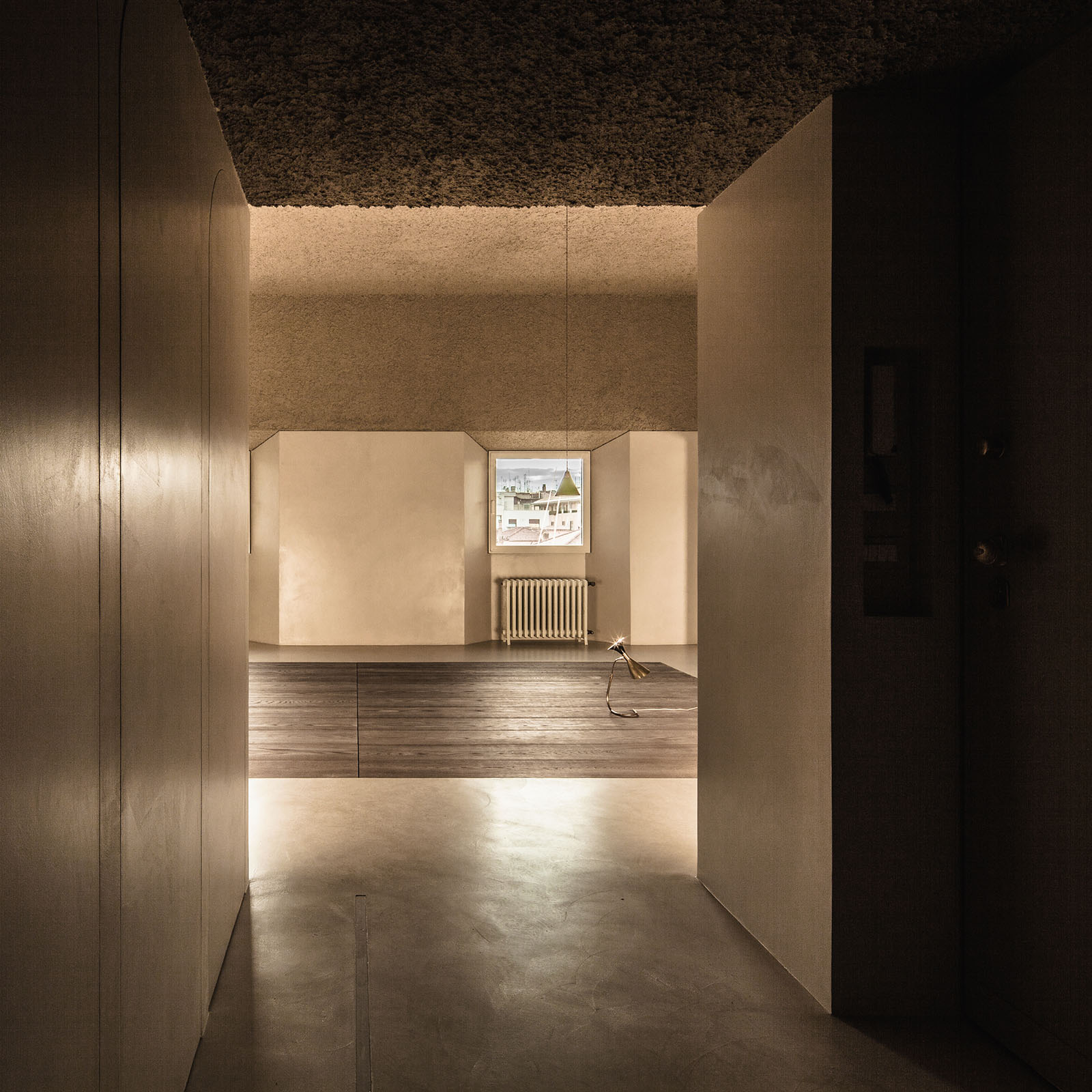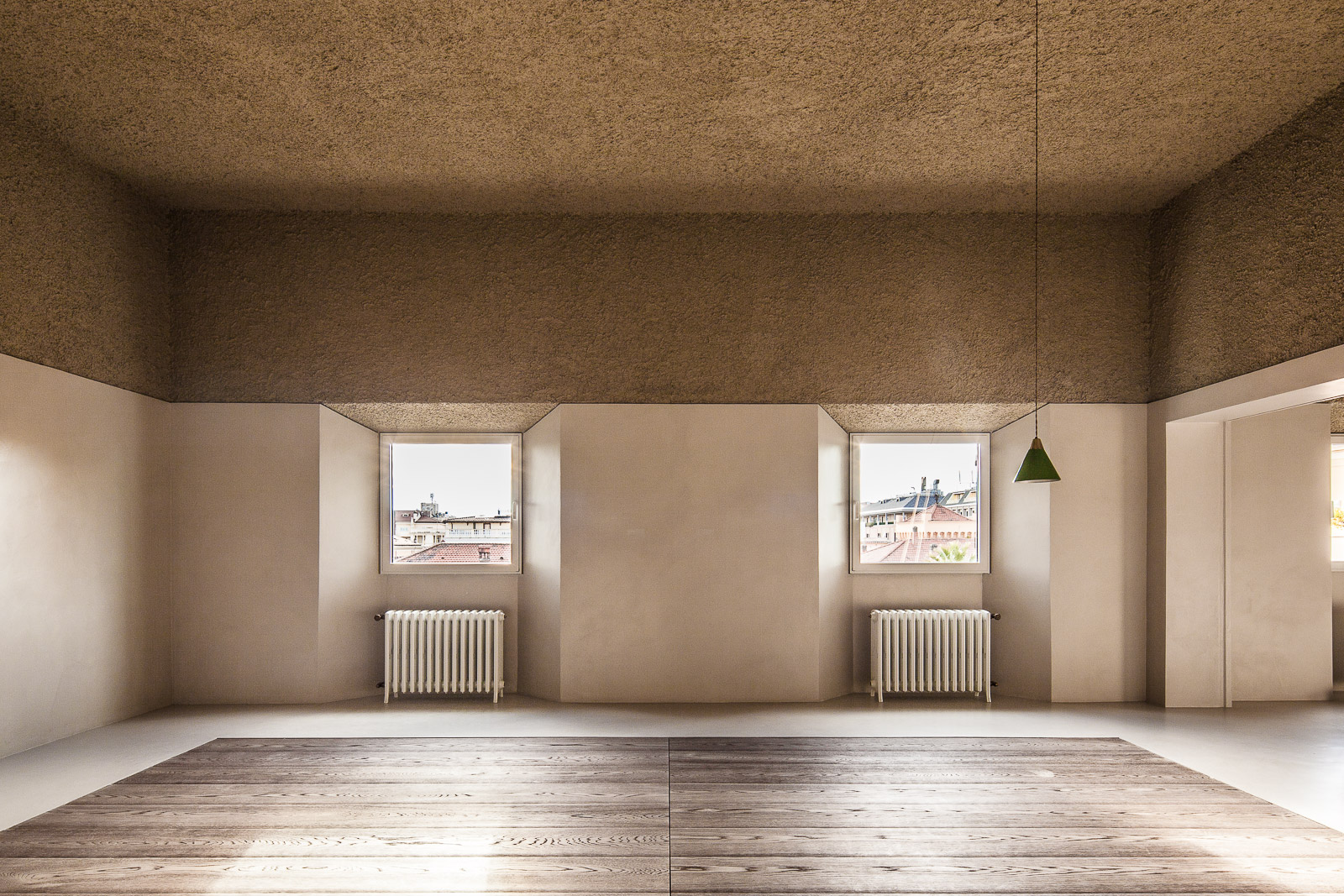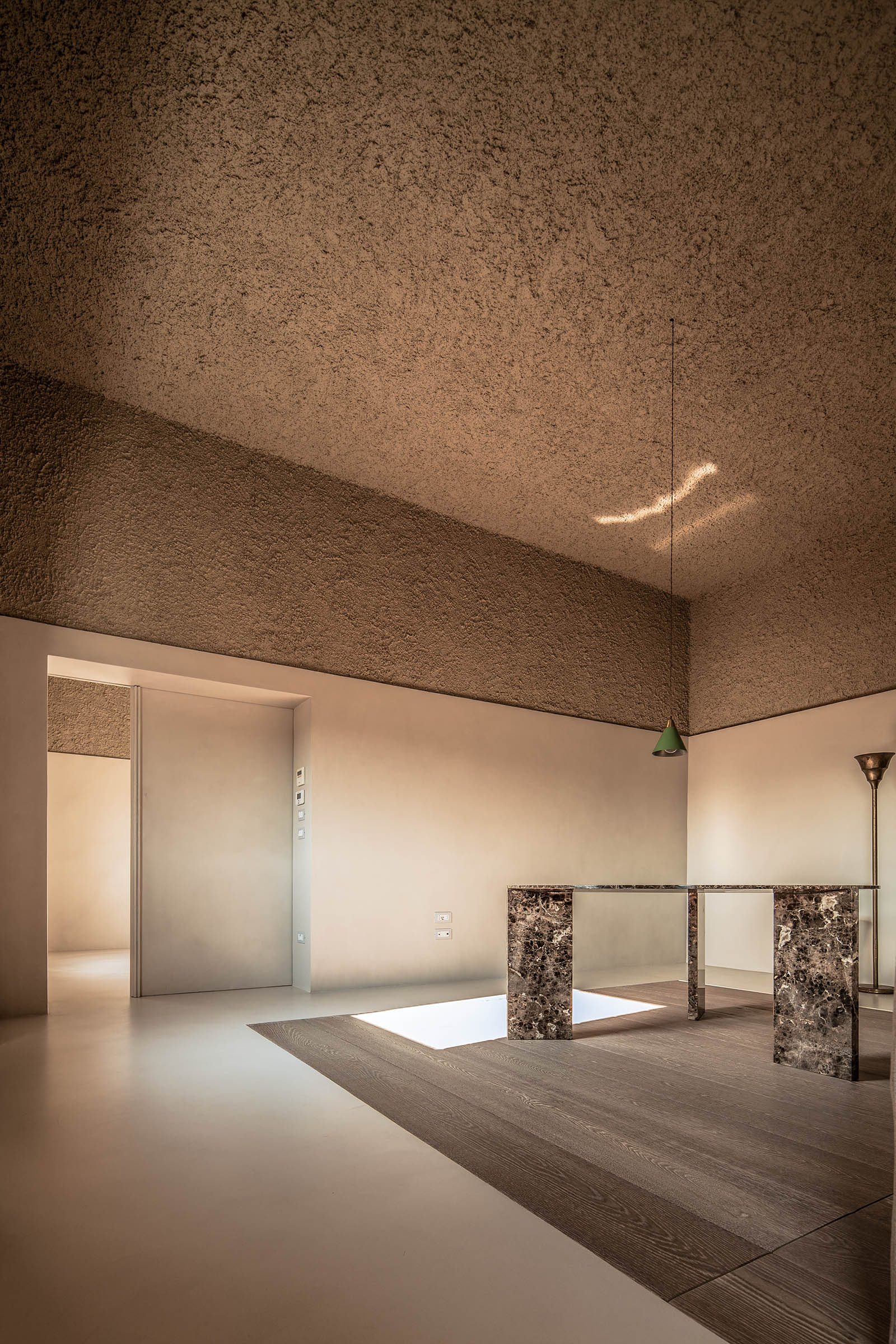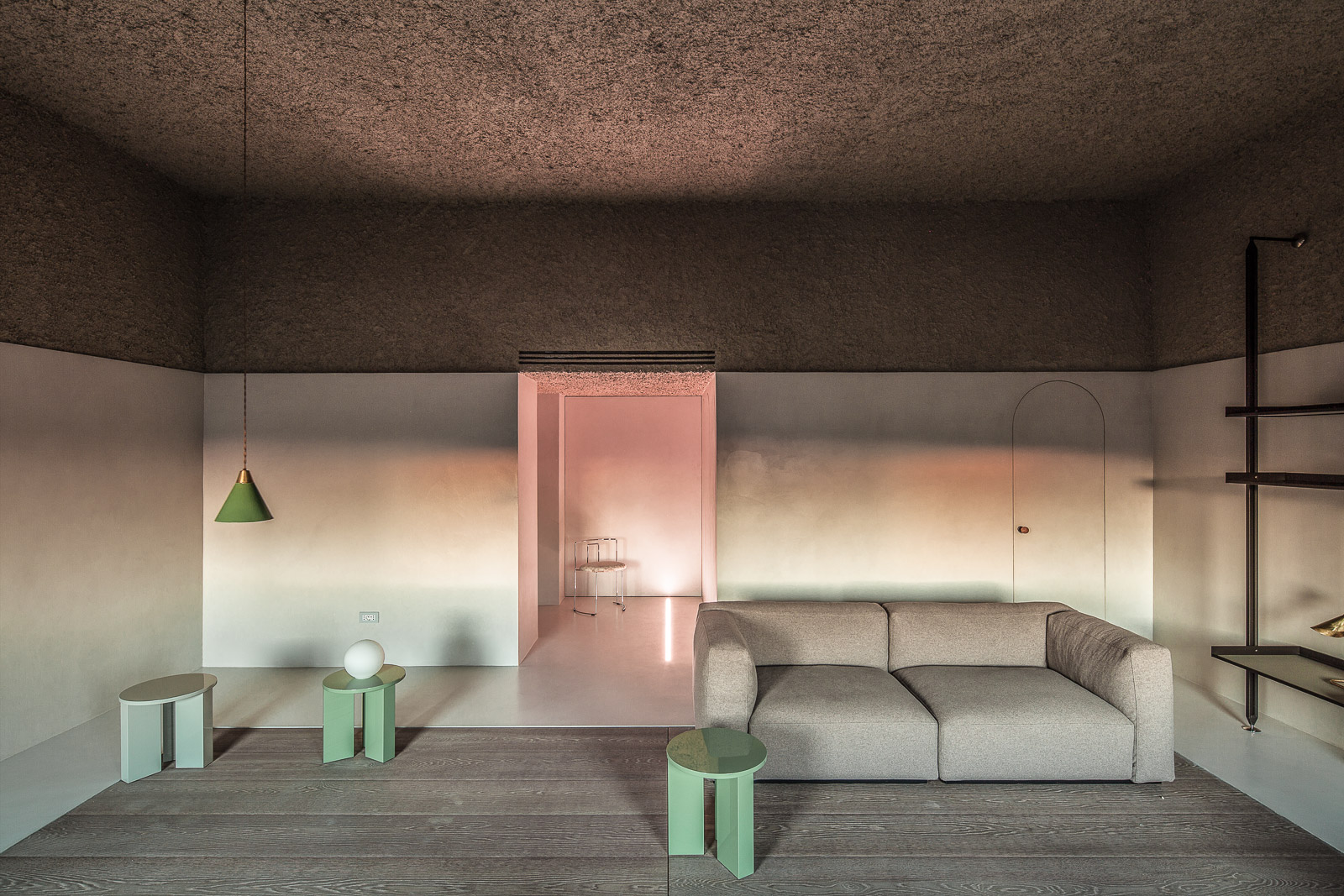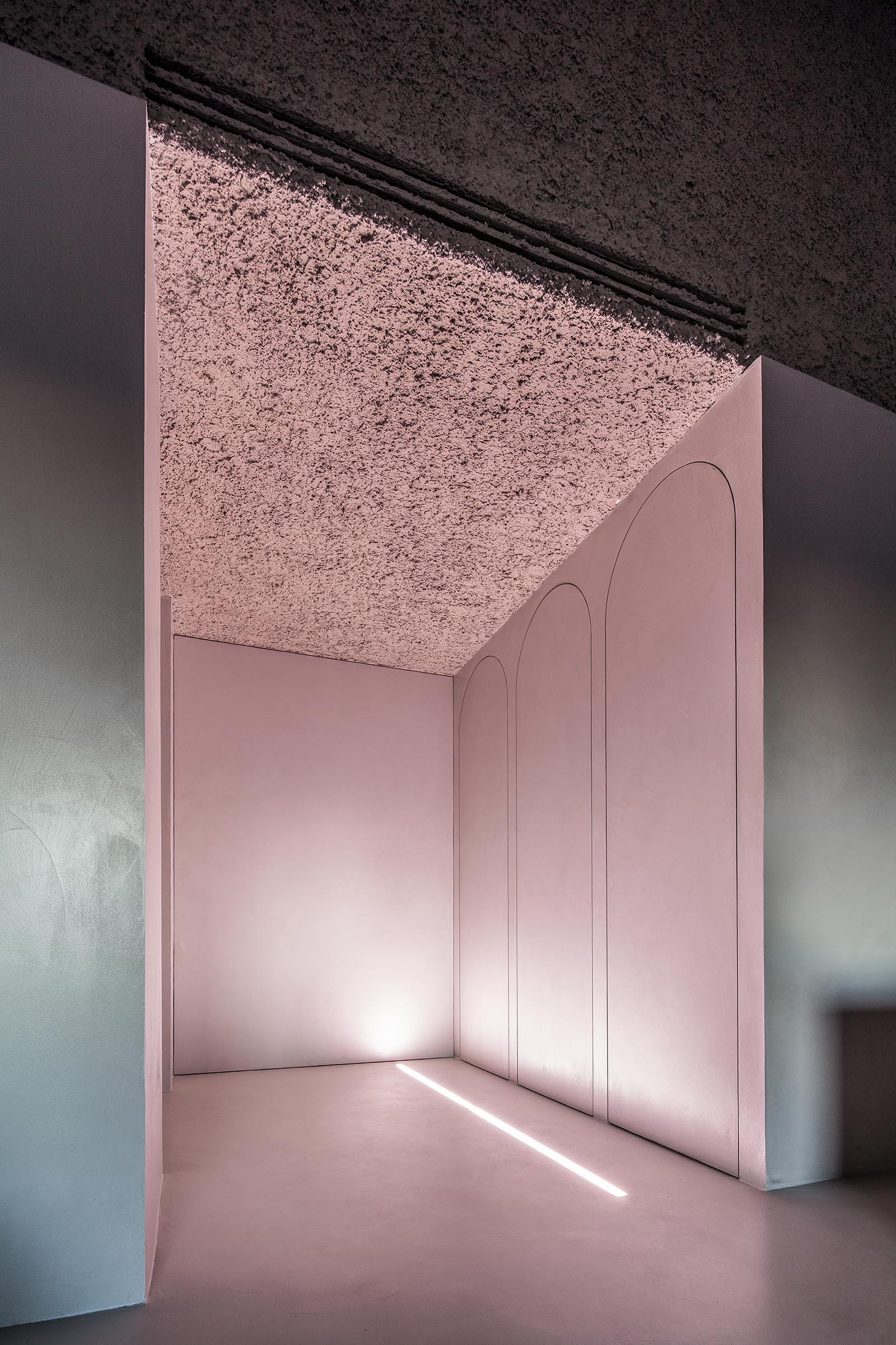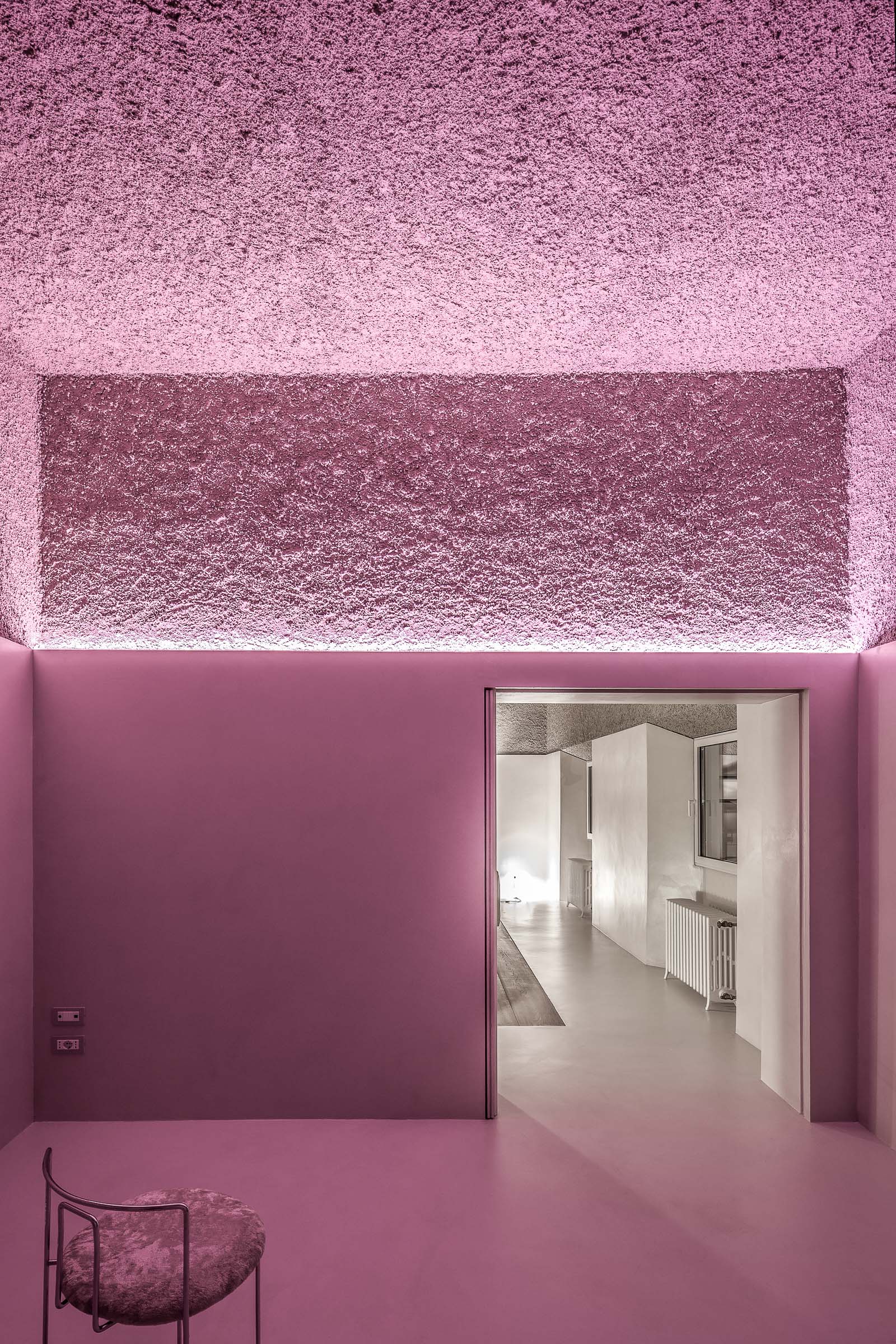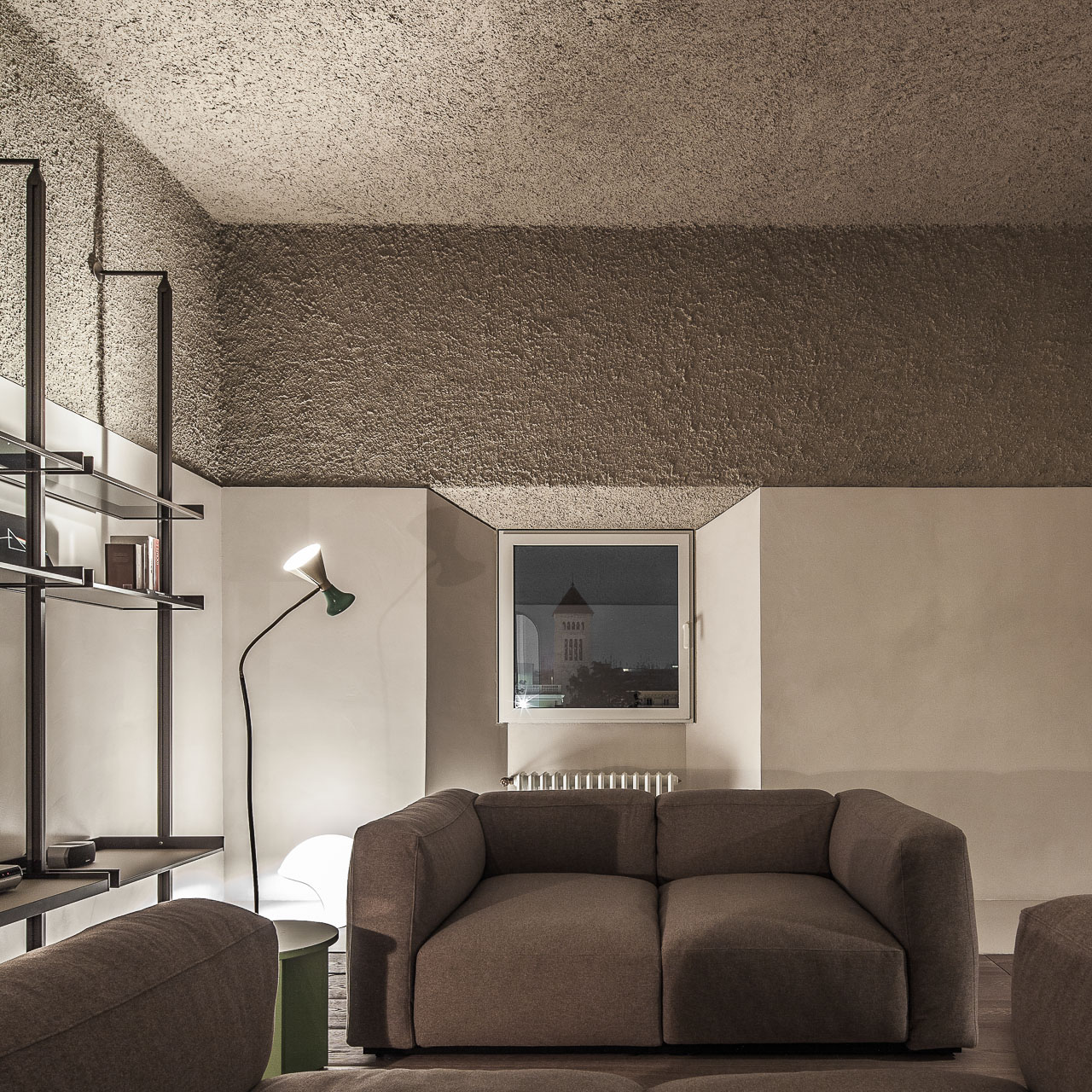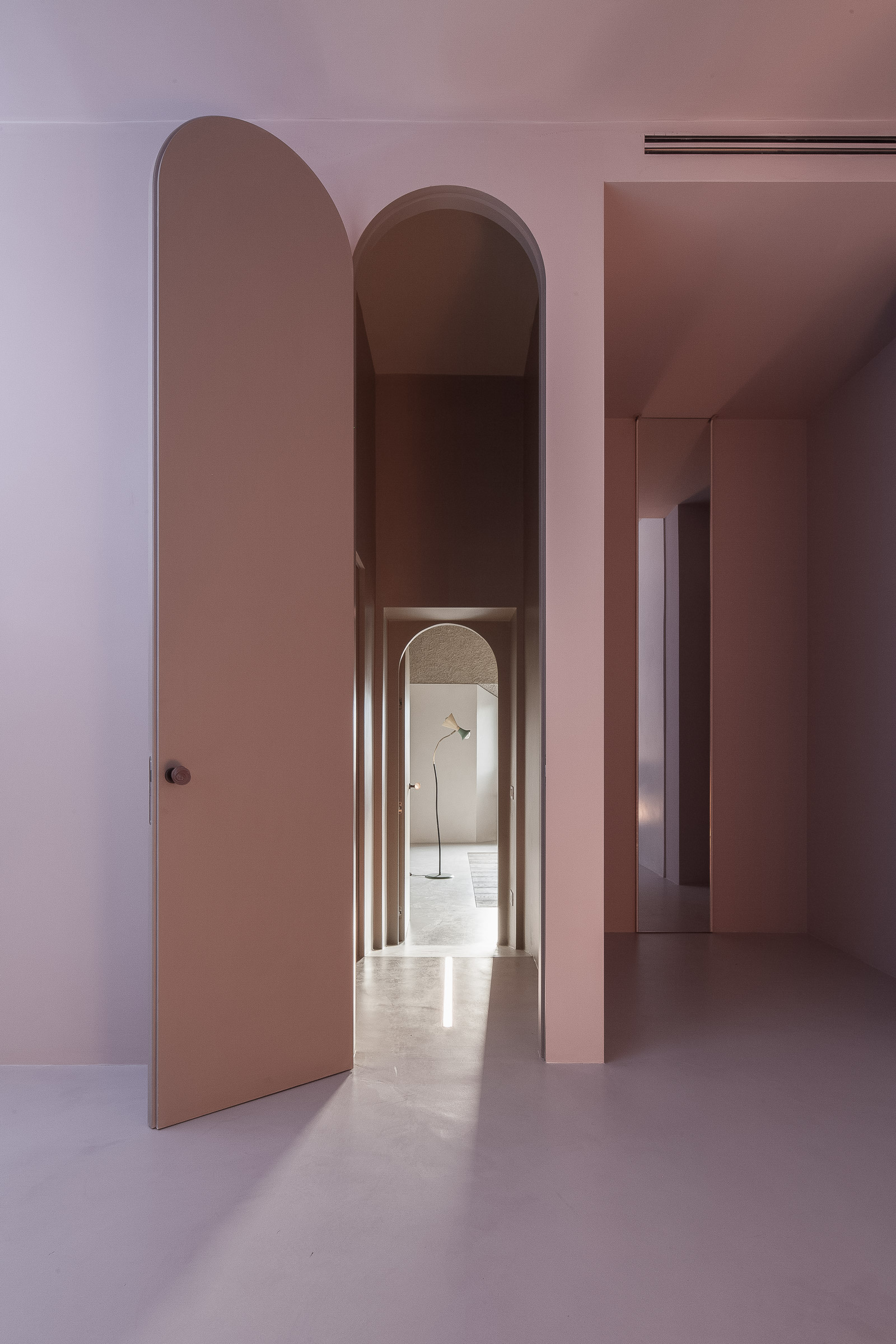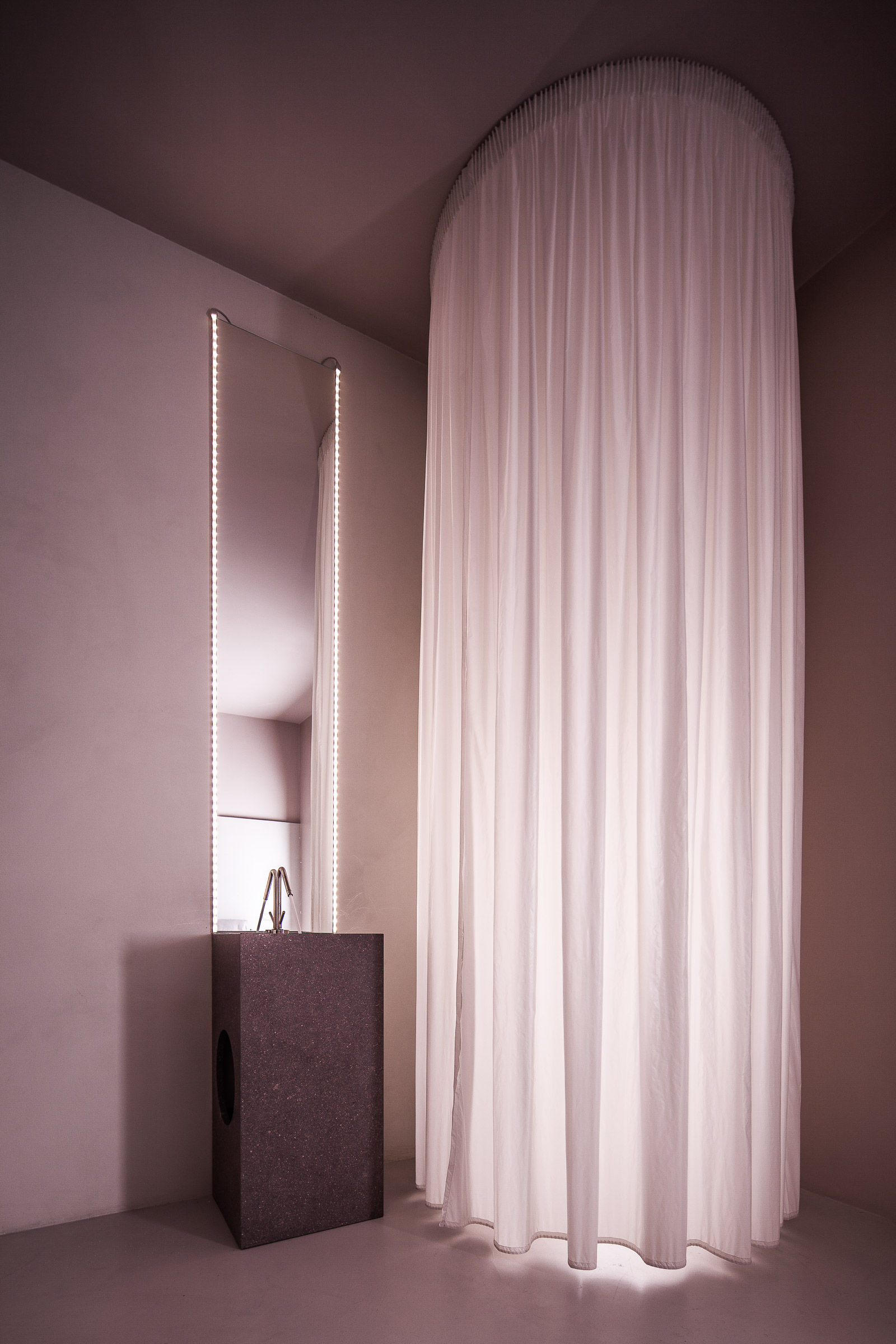Kerstin Schultz, Hedwig Wiedemann-Tokarz, and Eva Maria Herrmann
The alienation of the material using the devices of color and texture surprises and, at the same time, generates a feeling of security.
Thinking Color in Space: Positions, Projects, Potentials, Birkhäuser, Berlin/Boston, December 2018, p. 342. (de, en)
Annie Carroll
His understanding of space and balance has resulted in some of the most influential interiors of recent times.
atelierlumira.com, Sydney, 22 January 2018. (en)
Monica Khemsurov
Cardillo is the guy behind one of our favorite interiors projects in recent memory, the House of Dust.
sightunseen.com, New York, 22 April 2017. (en)
Eve
A jewel of contemporary architecture that captured the attention of his entire profession.
promostyl.com, Paris, 24 November 2017. (en)
Antonino Cardillo
I regard my work as an inquiry into forgotten significances of the past, akin to a codex primarily based on notions of protection and eroticism. […] Consequently, these archetypes continue to inhabit our subconscious, admonishing us that there is more than the commonplace visions imposed by society.
Ed. Carol Junqueira, bamboonet.com.br, São Paulo, August 2016. (en, it, pt)
Beppe Finessi
A new author who has carved out a place entirely his own in the history of this discipline within just a few years.
‘Stanze. Altre Filosofie dell’Abitare’ [exhibition], XXI Triennale, Milan, April 2016. (en, it)
Sophia Klinkenberg
Cardillo links shadows and mysteries to the creation of a sense of eroticism.
Being in shape / shaping environments, thesis, Koninklijke Academie van Beeldende Kunsten, The Hague, May 2015. (en)
Francesca Gottardo
A dimension seemingly out of time, which here seems to have stopped or never spent, suspended, immobile.
Abitare la Terra, no. 37, dir. Paolo Portoghesi, Rome, March 2015, p. 50. (en, it)
Francesca Taroni
Antonino Cardillo focusses on the potential of the ceiling.
Living, no. 1/2, Corriere della Sera, Milan, February 2015, p. 13. (it)
Nacho Alegre
It instantly brought back memories of the best postmodern, neoclassical architecture that I was revisiting at the time—Bofill, Moneo, Tusquets—but with a more personal and very contemporary view.
Room: Inside Contemporary Interiors, Phaidon, London, October 2014, p. 64. (en, it)
Haim Kapon
Cardillo breaks boundaries, shatters familiar templates, and pours a unique individual character into his works with a new language based on classical principles. All this being said, it is quite clear that this new aesthetic language is not easy to digest and understand and is not intended for everyone; it is very far from the mainstream, deep, different and other, as pioneering works tend to be.
Trend, no. 141, Tel Aviv, March 2014, p. 180. (en, he, it)
Jenny Dalton
It is purposely reminiscent of all kinds of subliminal historical references, in particular the vault of very early architecture.
How to Spend It, Financial Times, London, March 2014, p. 71. (en)
Christine Schroder
The architect has managed to create a flat with solid materials […] that processes the history of architecture and the very particular history of the city of Rome in its own unique way.
AIT Magazin, No. 3/14, Leinfelden‑Echterdingen, March 2014, pp. 120‑125. (de)
Ana Araujo
It is a hopeful piece that suggests that architecture still holds the power to awaken our senses and emotions for a deeper, more intimate and fulfilling engagement with the world.
The Journal of Architecture, vol. 19, no. 1, RIBA, London, January 2014, p. 15. (en)
Spencer Peterson
Doing a house up entirely in earth tones would be pretty ill-advised 99 percent of the time, but in the right hands the effect can be nothing short of arresting.
curbed.com, New York, 20 December 2013. (en)
Riya Patel
In place of abundant natural light and designer furnishings are gloomy cavernous spaces characterized by a grainy ceiling of pozzolanic plaster, tinted the colour of dust.
Frame, no. 95, Amsterdam, November 2013, p. 58. (en)
Sandra Bermudez
The Sicilian architect uses colour to illustrate the path of humanity: “from the grotto to the rose” as the maximum expression of the sublime.
Folio, vol. 4, Mexico City, October 2013, p. 42. (es)
Felix Mara
An apartment interior in Rome’s Via Veneto, glamorised by Fellini’s La Dolce Vita, the House of Dust serves as an ideal springboard for fanciful lighting effects and architectural narrative.
Architects’ Journal Specification, London, October 2013, pp. 4, 50‑55, cover. (en)
Dana Tomic Hughes
This is a courageous project with a fresh aesthetic and a unique vision. It’s the kind of interior that creates new trends, memes and movements.
yellowtrace.com.au, Sydney, 27 September 2013. (en)
Mitchell Oakley Smith
As one of the world’s most exciting architects, Antonino Cardillo draws on classical and ancient architectural forms to create spaces that feel entirely new.
mroakleysmith.com, Sydney, August 2013. (en)
Tim Berge
For the architect, architecture becomes interesting where it “becomes invisible or hides something” and exists on the border “to the dream”—with his House of Dust he has precisely realised this into reality.
designlines.de, BauNetz, Berlin, 13 August 2013. (de, en, it)
Amy Frearson
Italian architect Antonino Cardillo used roughly textured plaster to create lumpy brown surfaces across the upper walls and ceilings of this apartment in Rome.
dezeen.com, London, 5 August 2013. (en)
Paolo Maria Noseda
A side entrance reveals a hall that, like a Greek mask suddenly worn by the visitor, projects and draws attention onto two tapered windows: a pair of eyes on the world.
Casamica, no. 3/13, Corriere della Sera, Milan, June 2013, p. 77. (en, it)


